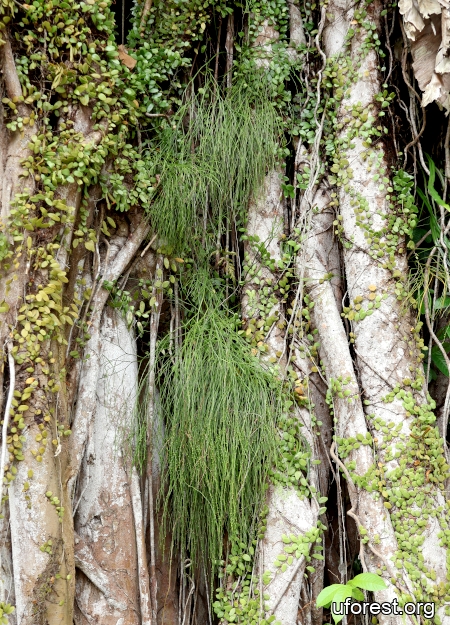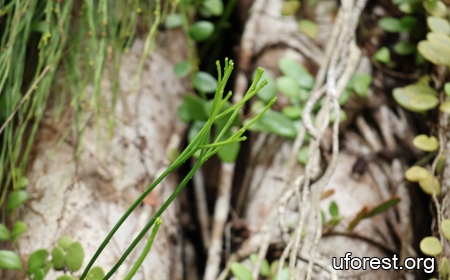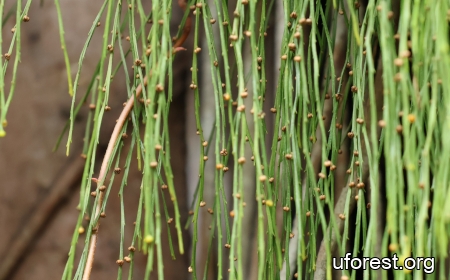Psilotum nudum (L.) P.Beauv.
| Etymology | Genus | From Greek psilos=naked, referring to the apparent nakedness of the stems |
|---|---|---|
| Species | Naked | |
| Family | Psilotaceae | |
| Synonyms | Lycopodium nudum L. | |
| Common Names | Whisk Fern, Parai masiri | |
| Status | Native: Least Concern | |
| Form | Epiphyte, Lithophyte | |
| Native Distribution | Tropics & Subtropics | |
Diagnostics:
Psilotum nudum is a unique fern with no obvious leaves. It grows in clumps usually as an epiphyte on trees and can be identified easily from its string like stems that branches dichotimously.
Interesting Facts:
Psilotum nudum is known to be used traditionally for many medicinal purposes. Extracts of the plant was shown in-vitro to possess antibacterial and antifungal effects (Rani et al., 2010). Phytochemical analysis revealed that it contains compounds such as flavonoids, tannins, alkaloids, triterpenoids and steroids, that are posulated to be the source of its various medicinal properties.

Growing as an epiphyte at MacRitchie visitor centre (2025).

Dichotimous branching.

Spore bags.
References
Rani, P., Khullar, N., & Kaur, S. (2010). In vitro antibacterial and antifungal properties of aqueous and non-aqueous frond extracts of Psilotum nudum, Nephrolepis biserrata and Nephrolepis cordifolia. Indian Journal of Pharmaceutical Sciences, 72(6), 818–822.
Author: Siyang
Posted: 2025-10-27